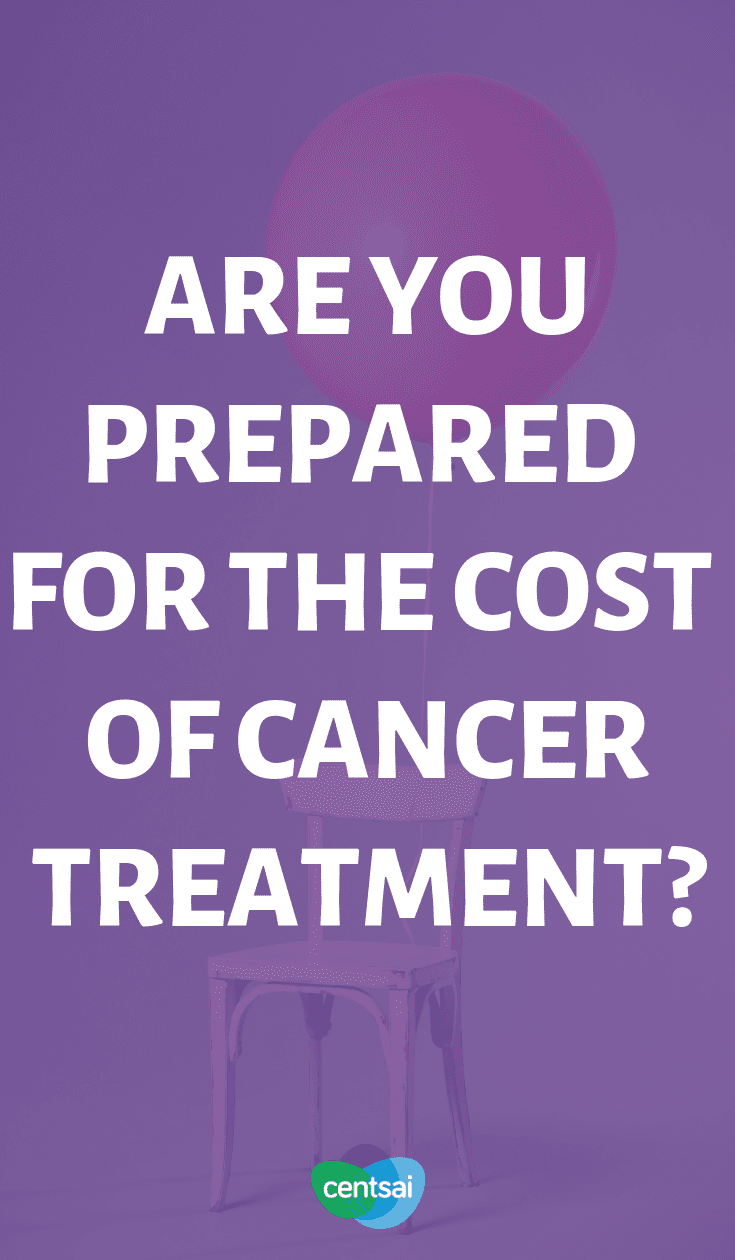
I always considered cancer to be a disease that affects only the elderly. My great-grandmother passed from cancer, and as sad as it was, her death was not tragic. She had lived a full life and passed away surrounded by loved ones.
 Then one day my world changed when four of my family members were diagnosed with cancer within a single year.
Then one day my world changed when four of my family members were diagnosed with cancer within a single year.
I witnessed my nephew going through cancer treatments and the accompanying financial hardship. Six months after my nephew passed away, his mother received her own cancer diagnosis.
During this time, my mother-in-law also felt the effects of this horrible disease. I spoke with her daily. She told me about all the time she missed from work as a result of costly chemotherapy appointments.
I realized how important it was to protect not only your health, but also your finances.
According to the American Cancer Society, nearly one in three people will be diagnosed with cancer at some point during their lifetimes. There are 29 children diagnosed with cancer every day in the U.S. It’s a disease that affects individuals of all ages and walks of life.
And the cost of cancer treatment and other medical necessities isn’t cheap. Over 66 percent of bankruptcies were linked to medical bills, according to a 2018 study published in the American Journal of Public Health. This occurred despite a general increase in insured persons under the Affordable Care Act.
On average, Americans with colorectal cancer can expect to pay upward of $15,000 the first month they receive a diagnosis, according to research conducted in 2017 by Milliman Research. Meanwhile, those with lung cancer can expect to pay nearly $25,000.
When the Costs Add Up
As cancer treatments become more specialized, people have to travel further and further for care. My nephew’s mother drove an hour a day, three to four days a week, for his treatments. She and my brother also traveled five hours to New York City to consult with specialists in order to receive a bone marrow transplant exam.
My mother-in-law had to leave work several times throughout the week for doctor’s appointments, chemotherapy, and radiation.
In my great-grandmother’s case, she lived alone with no family close by. She often drove herself, but sometimes needed friends or family to assist her after difficult treatments or procedures.
Out-of-pocket medical expenses are another concern: co-pays, deductibles, second opinions, and prescriptions. Chemotherapy is a prescription and is subject to your deductible. Some patients have to go to multiple doctor appointments in one day and incur multiple co-pays.
When there are children in a family with a cancer diagnosis, there are frequently child-care costs.
I know of a family that had to move an hour away from home. They left their children with relatives throughout the week and had the kids travel to their father’s hospital on weekends. Children might not be permitted to attend doctor’s appointments or be allowed in hospitals for overnight stays. As such, you might need to make additional arrangements.
What to Do About the Cost of Cancer Treatment
Prior to my personal experiences, I believed people could address these situations by having a large emergency fund in a savings account. That, or your family could take care of you. The government might also offer some assistance if you qualify.
I always thought that you may not be able to prevent cancer, but you can protect yourself through careful savings and a dedicated support network.
But for many affected individuals, it’s not possible to build a large money reserve immediately, if at all. Many people live paycheck to paycheck — 62 percent of millennials, according to a survey by Charles Schwab.
Missing work due to cancer can be financially ruinous, but there are additional steps you can take to stay afloat.
For instance, you can get disability insurance while you’re still healthy. This is meant to replace a portion of a worker’s income if he or she is unable to work due to illness or injury.
Disability income protection is an essential piece in assuring that unexpected events don’t destroy what you have worked so hard to build. Specified disease coverage, such as a cancer policy, pay in a lump sum or defined benefit.
What Is Disability Insurance?
Disability insurance is designed so you can receive a percentage of your income while you are out of work due to illness or injury.
Short-term disability (STD) generally lasts less than one year, whereas long-term disability (LTD) can last for several years in order to accommodate more debilitating conditions that prevent you from returning to work. That said, both have elimination periods, or time between incurring injury or illness and receiving benefits.
Individuals use both STD and LTD for a variety of conditions that prevent them from working, ranging from personal injury to illness to pregnancy.
Expecting mothers frequently use short-term disability benefits in the months leading up to their child’s birth.
“On average, short-term usually lasts three to six months, with long-term lasting for whatever term-length policy you purchase, up to age 67,” says insurance agent Andrew Stewart of AMS Resources Network. “Short-term disability basically exists to cover the elimination period for long-term, which is usually three to six months.”
Crunching the Numbers for Disability Insurance
Everyone, regardless of their employment, should sign up for disability insurance. To that end, we’ve broken down the key components of STD and LTD so that you can understand what you’re paying into and what benefits you’ll receive:
- Your monthly premium is how much you pay into your insurance per month so that you can collect financial benefits at a later date.
- On average, both short- and long-term disability premiums will cost you no more than 3 percent of your annual income. In fact, it can be even less, depending on health factors.
- “A healthy 30-year-old working a typical office job can replace 60 percent of a yearly income of $60,000 with a $58 a month premium, which in this case is roughly 1 percent of their income,” Stewart says.
- Employers frequently offer STD for free, but you can take out a private plan if your employer doesn’t do so. More than half of mid-to-large-size employers offer LTD. You can also purchase it from a separate insurance agency.
- “Short-term disability cost is very variable, but it is usually vastly less expensive, in the range of $10 per month for basic coverage,” Stewart adds.
Preparing for the Cost of Cancer Treatment: The Bottom Line
Financial risk does not go away on its own. There are, however, steps you can take.
Begin building a cash reserve or increase the one you have. Consider both short-term and long-term disability insurance. Examine the benefits of your individual insurance policy to see if your provider mitigates the financial risks.
After my family members were diagnosed, I took the time to learn about cancer, its treatments, and statistics. In general, I found that many affected individuals didn’t protect themselves, either by purchasing disability insurance or creating an emergency fund.
Ask yourself: If a cancer diagnosis comes to you or your family, will you be prepared for the cost of cancer treatment? If the answer is no, make sure to take the right financial steps to prepare for an uncertain future.
Additional reporting by Connor Beckett McInerney.







